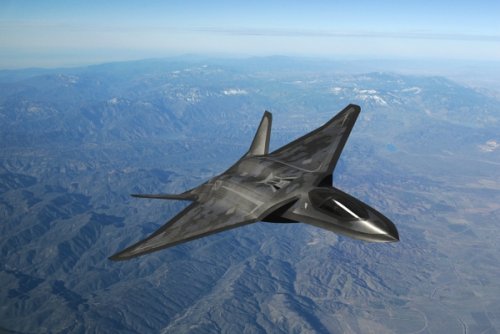- Joined
- 17 October 2006
- Messages
- 2,317
- Reaction score
- 727
Remember that CALF started as a CTOL/STOVL concept. The original LockMart design was a canard because it had better area distribution than a tail-aft, which was important because of the lift-fan volume being well forward.
However, once you added CV, wing span and area were driven by the approach-speed case - but a CV-sized wing would be too heavy for STOVL. Now consider the geometry of adding span to a highly tapered (delta) wing without compound sweep (which your signature guys won't let you do). Your root chord goes up and (unless you want to suboptimize weight and volume) so does root thickness. Your canard/wing separation goes to hell because the canard needs to be larger too.
Boeing tried to get away with a big delta wing with modest loading and small tip extensions for the CV. What nailed them finally was the chord and consequent actuator power and weight of the elevons needed to provide enough trim/control for the Navy's bring-back requirement, which firmed up part-way through the CDA stage at a higher value than they had anticipated.
In short, their initial design could not meet the CV requirement - and indeed, neither could LockMart's winning CV design, without a 5,000 pound increase in OEW and bigger wings and stabilizers.
However, once you added CV, wing span and area were driven by the approach-speed case - but a CV-sized wing would be too heavy for STOVL. Now consider the geometry of adding span to a highly tapered (delta) wing without compound sweep (which your signature guys won't let you do). Your root chord goes up and (unless you want to suboptimize weight and volume) so does root thickness. Your canard/wing separation goes to hell because the canard needs to be larger too.
Boeing tried to get away with a big delta wing with modest loading and small tip extensions for the CV. What nailed them finally was the chord and consequent actuator power and weight of the elevons needed to provide enough trim/control for the Navy's bring-back requirement, which firmed up part-way through the CDA stage at a higher value than they had anticipated.
In short, their initial design could not meet the CV requirement - and indeed, neither could LockMart's winning CV design, without a 5,000 pound increase in OEW and bigger wings and stabilizers.



